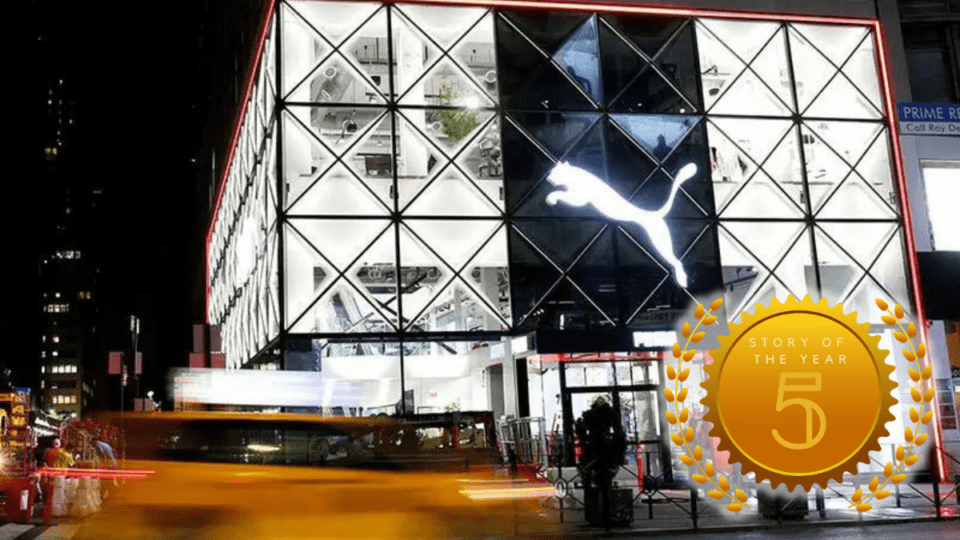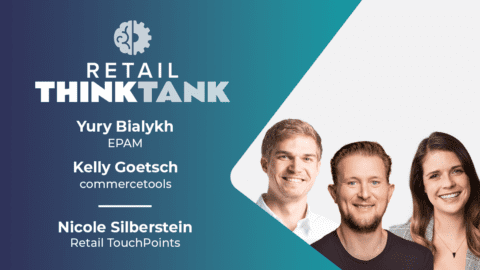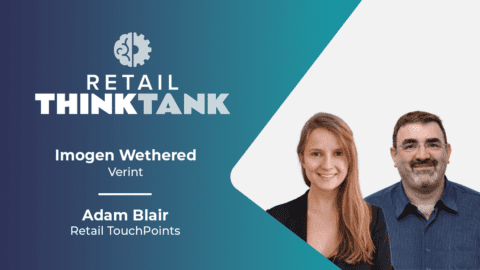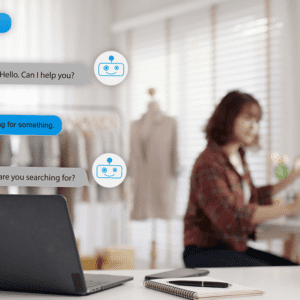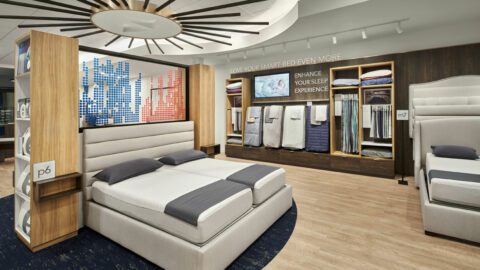Editor’s Note: As 2023 comes to an end, we are highlighting some of our most-read content of the year. We look forward to continuing to deliver original, thought-provoking stories like this one to our readers in 2024.
Anyone who shops online has probably at some point fallen victim to “inspiration clickbait.” Much like an article that doesn’t live up to its catchy headline, Rohan Deuskar describes inspiration clickbait as compelling shopping content (most often visual) that ends up driving a user into a disappointing, bland ecommerce experience.
“Most of the time shoppers aren’t looking for individual products, they want to complete an outfit or create a certain look, so brands speak to them in that language,” said Deuskar, who is the Founder and CEO of the visual merchandising platform Stylitics. “They’ll have something like ‘Our favorite fall looks’ in ads or banners on their homepage, and it sets the shopper up with an expectation. But then when you click into it, you get dumped into this gigantic array of products. When you promise somebody fall looks, you should drop them into a shoppable set of products on that theme.
“The reason [this isn’t happening] is not because retailers and brands don’t want to do better,” Deuskar said in an interview with Retail TouchPoints. “Those are just the form factors they have: they have marketing assets and they have product images. They don’t have other visual content on-demand at scale.”
Advertisement
Deuskar is trying to change that with his platform, which uses a brand’s existing visual assets to generate styling, outfitting and bundling content that retailers can plug into their websites. Stylitics currently works with more than 150 retailers, including Walmart, Bloomingdale’s, Kohl’s, Chico’s, West Elm, Express and Puma, to:
- Generate on-brand outfit combinations that require almost no input from merchandisers;
- Incorporate outfit carousels and Shop the Look functionalities aimed at inspiring online shoppers to explore beyond the product they’re currently viewing; and
- Tackle larger business goals like customer retention, e.g. by including outfit suggestions in follow-up emails, or handle issues like inflation and excess inventory by, for example, strategically featuring heavily stocked items and limiting suggestions for lower-stocked items.
“Most retailers have beautiful stores with mannequins and other forms of inspiration, but this is totally lacking in the ecommerce experience,” said Deuskar. “Everyone is still following the model Amazon created to sell books. If you’re buying books, you don’t need to see what those books look like together, but most people do need that for clothing.”
Increasing AOV While Building Customer Confidence
Puma has been working with Stylitics for almost three years now with the primary aim of increasing basket sizes. “We’re always looking for ways to get consumers to aspire to that head-to-toe look, but there’s only so much you can do when you just place things in grids next to each other and hope that people see the vision,” said Jessica Duvall, Senior Director of Ecommerce Merchandising and Content for Puma North America in an interview with Retail TouchPoints.
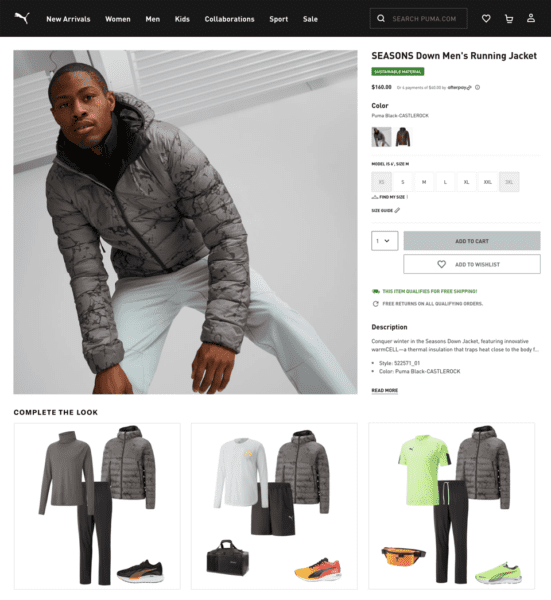
Enter Stylitics, which has helped Puma realize huge jumps in AOV (up more than 3% among Stylitics users), conversion (up 235%) and session duration (up 334%). Puma has deployed the solution across product detail pages (PDPs) both on its website and its newly launched app in the U.S. and Canada. The result is a carousel of styled looks at the bottom of every PDP that shows the featured product along with complementary apparel and accessories. Puma is also using Stylitics’ Shop the Model feature, which lets users find the exact products pictured on the PDP imagery.
“Most sporting [goods] retailers have sneaker-led demand, or a certain occasion- or sports-led demand, so oftentimes there’s a bunch of people gravitating to a certain product and then they bounce away,” said Deuskar. “The real goal for Puma is to get that person to look at more categories, look at more products and increase average order value. And for the shopper, there’s a confidence-building component; it’s a sort of brainstorming that Puma can do with the shopper.”
“When we rolled out Shop the Look, it performed higher than anything else from an engagement perspective,” added Duvall. “People really wanted to shop what the model in the default image was wearing.” As a result, Puma now has the Shop the Model look appear as the first image in the Stylitics carousel on as many PDPs as possible.
Not Your Basic Product Recommendations
The Stylitics solution goes well beyond standard product recommendations, which typically show variations of the same product a customer is already viewing or products that lookalike customers bought. Creating outfits is much harder, according to Deuskar, not only because each combination has to feel on brand, but also because of the need for “variety and making sure that every outfit is visually appealing.”
To do this, Stylitics deploys data science and AI to take the manual labor out of bundling and outfitting and generate combinations at a scale that would never be possible “by hand.” Once the initial integration is in place, Deuskar said there’s almost no need for a brand’s merchandisers to be involved in the generation of the hundreds, sometimes thousands, of different outfits being created.
Of course, to get to that point you have to make sure those professionals trust the machine. “Brands like Puma have so much brand value and cachet, and they have designers with a deep perspective on their products,” said Deuskar. “You need to make sure that the output respects that so they can have complete confidence in our system.”
The integration process typically involves a lot of listening and learning on the part of Stylitics, as well as testing and refining on the part of the brand, but Duvall said for Puma the system worked shockingly well very quickly. “It does feel a little scary, and out of the gate we did have guardrails on the approval [of outfits] because it was new for us,” she said. But Duvall said that she and her team were surprised by how rarely they had to reject outfits in the early days and said they very quickly got to a point where they no longer felt the need to approve or disapprove specific outfits — they just let the platform do its work.
“It was impressive how quickly [the Stylitics platform] was able to identify things that went together, whether it was based on attributes of sale versus full-price, or items both having the same collection name,” Duvall added. “And there were very minimal business cases that we had to go back and say, for example, we would never put a Mercedes top with a BMW bottom because it’s a conflict of interest.”
An AI-Powered Tool to ‘Speak About Your Brand’
Other specific rules that Puma has put in place include logic around inventory thresholds, so that if an item is low in stock it doesn’t appear in recommended outfits. In fact, the Stylitics platform can also help retailers deal with issues like inflation or excess inventory by strategically placing (or not placing) products in outfits according to a brand’s goals.
“We’re almost like an internal ad network for their products, so if we really want to push, say, a particular puffer hoodie before the season changes, that outfit gets boosted to the front,” explained Deuskar. In another use case, a retailer might choose to boost lower-cost items in order to encourage price-conscious shoppers to increase their basket size without giving them sticker shock.
Puma is now also using Stylitics to aide its retention efforts beyond its website by including outfits in post-purchase emails, “so when you buy something, you now get outfit recommendations personalized to you in those emails,” Duvall said.
And Puma wants to bring Stylitics into other areas as well of its business as well, including product listing pages and potentially even the homepage. “Now we’re looking for opportunities to bring this more upper funnel, for example, on Mother’s Day having a gift guide that’s a layout of outfits versus just a product grid,” said Duvall. “So we’re really looking to not only optimize Stylitics, but see how can we think differently with it.”
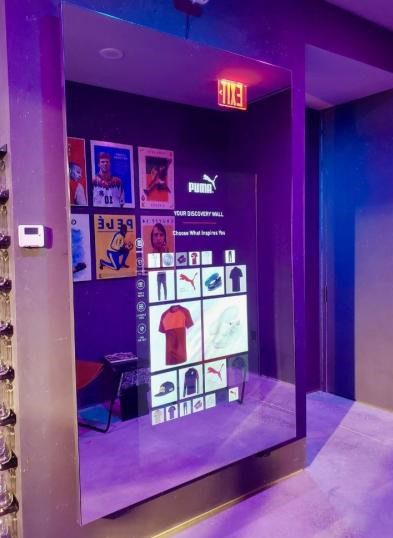
Puma has even brought the platform into its store through iMirrors at its NYC flagship and a handful of other locations. “The smartest retailers see this not as an ecommerce feature, but a brand strategy,” said Deuskar. “This is a way to speak about your brand and demonstrate your brand to shoppers without having to go back to the studio [to create new visual assets] every time.”
Moving forward, both brands are focused on personalization as the next step in their journey. “For me it’s about capitalizing on what you have online that stores don’t,” said Duvall. “We can treat every customer differently because we know so much about them. What if every customer had a curated homepage? What if every Stylistics carousel was curated because we know you’re a woman versus a man? It’s about tapping into the data that we have on our customers to parse out different site experiences from the homepage all the way down to PDP.”
“Most shopper experiences online are a lot of noise and very little signal,” added Deuskar. “Everybody talks about personalization, but right now you go to a homepage, you navigate to a category, you sort through everything in the category, then realize it’s not in your size. What we want to enable is for brands to give [each shopper], based on what we know about her goal or intent, a selection of products that will appeal to her, surrounded with inspiration. So bring a selection to her, and then let her go outside that box if she wants to.”




